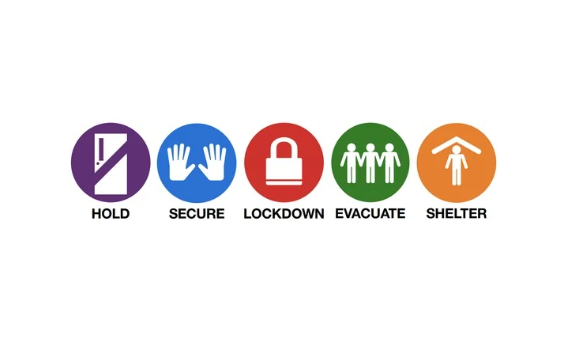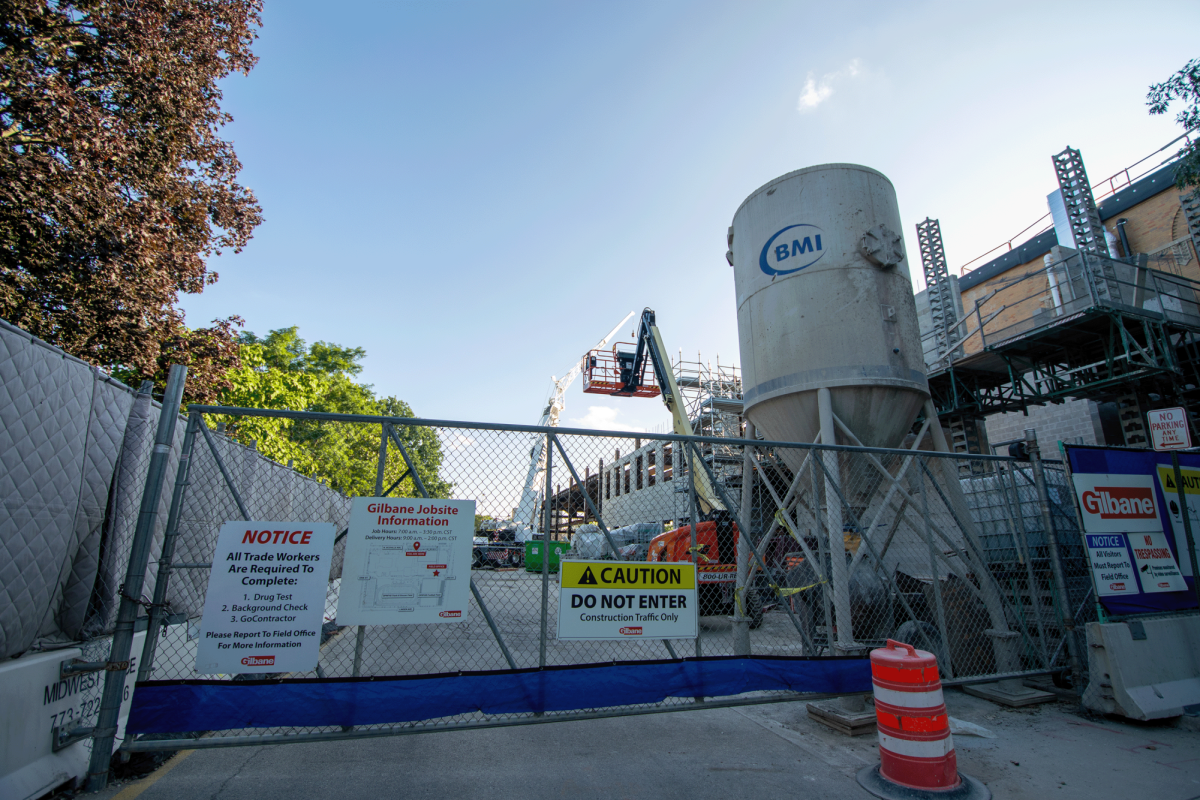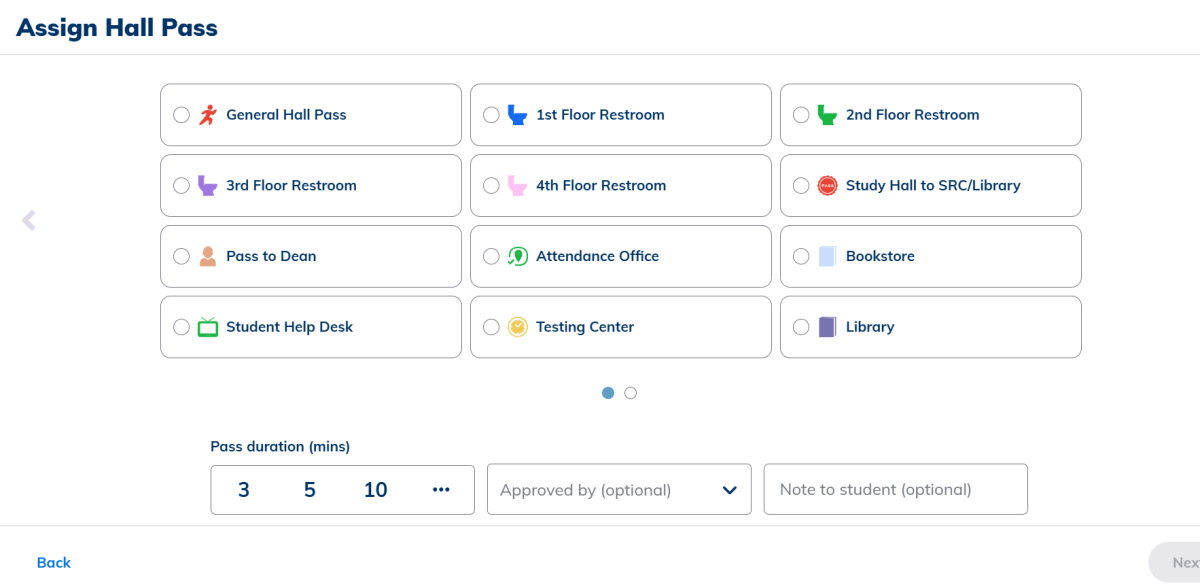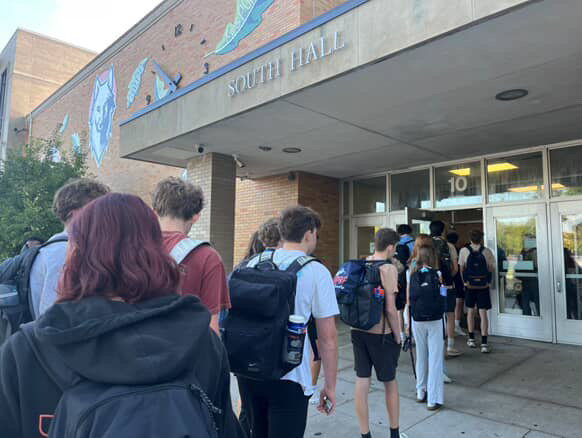Oak Park and River Forest High School has a new system for responding to emergencies.
Students learned about the new system, called the Standard Response Protocol, on Tuesday, March 11 when a video aired in advisories. The SRP, developed by the I Love U Guys Foundation, will be implemented starting this school year, following feeder districts 90 and 97.
The changes aim to simplify the emergency response process to avoid confusion during crises, according to Director of Campus Safety Kristen Devitt. Devitt was hired at OPRF in July of 2024 after a series of resignations from other campus safety directors. The implementation process began before Devitt joined OPRF, she said.
“[This change] to simplify what the emergency response process is so we’re not throwing a bunch of words at you that in a crisis are going to be confusing,” said Devitt. Instead of more complex phrases OPRF has used in the past, such
as “soft lockdown, “hard lockdown” and “secure and teach,” the SRP includes streamlined terms: “hold,” “secure,” “lockdown,” “evacuate” and “shelter.” (For details on the new terms, visit oprfhs.org/about/campus-safety.)
“Those simple words will help everybody understand a little bit better what needs to happen in an emergency situation,” Devitt said.
The SRP aligns with existing protocols in feeder districts, making the transition smoother for incoming students and parents. “The process that we’re putting into motion as well is also one that has been very heavily researched and developed as a very simple way to communicate during a crisis situation but also aligns really well with the types of commands and actions that are going to be expected from law enforcement, fire and emergency medical services,” said Devitt. “So it makes it a lot easier for us to communicate with those agencies during an emergency situation as well.”
The communication regarding this change began with faculty and staff to ensure they were prepared to answer questions. Parents were then informed a week prior to the official rollout to avoid confusion. A video was then shown during advisory, and additional communication will be sent via email and classroom posters. The posters will outline actions to be taken during different emergencies, such as lockdowns and evacuations.
This new process is designed to be more holistic, covering the entire emergency response from the initial event to the safe return of students to their parents. The reunification process includes providing resources for those struggling
emotionally and delivering information sensitively. According to Devitt, the communication and emotional support aspects are crucial in the aftermath of an emergency.
“When an emergency is happening, our main goal is to keep everybody as safe as we possibly can…when the emergency is over, then we start switching into recovery mode,” Devitt said. “And so when we think about the standard response protocol, as one small piece of it, the standard reunification method was the bigger kind of back-end program where we get you guys back to your families.”
Devitt is similarly implementing more internal changes to campus safety. Alongside the removal of window blinds on classroom doors and the locking of the doors during class time, Devitt is putting a greater emphasis on preventing propping open doors or allowing unauthorized entry. According to Devitt, the biggest threat to student safety is a lack of awareness of who is entering the building.
“I would say the biggest threat to safety is people who shouldn’t be in the building getting into the building. We work really hard to make sure that doesn’t happen, but…we need help from students and staff and faculty to keep the doors closed and locked and to make sure that we’re not letting kids in or anyone in who isn’t supposed to be here.”
The changes to campus safety come at a time when the majority of OPRF students generally feel safe at school, according to a recent survey. Fifty-four students responded to the survey, which was designed to see how students feel about the school’s security. More than 57% rated the school as “safe,” and 13% said it is “super safe.”
Not all students agreed. The survey showed that just over 25% thought the school was “half and half” on safety. How-
ever, just 3.7% thought the school was generally unsafe. No students described the school as “not safe at all.”
So far this school year, there have been no crises that required students to respond to emergency protocols.
Devitt noted that although emergency response is critical, school security is also about holistically addressing student behavior. “The next thing that we’re doing is a violence prevention program called behavioral threat assessment and management,” she said. “That violence prevention model really helps us identify students who are struggling and…get them the appropriate support that they might need, so that they don’t mobilize towards violence.”
Supporting students is the overall goal of any program aimed at improving safety, according to Patrick Poe, assistant director of campus security. “I think one of the things I would like students to know is we’re not here to be a part of anything but your well-being and solutions,” he said.







